This post may contain affiliate links. Please read our disclosure policy.
When a reader asked if my vanilla cake could become a white cake, I didn’t guess, I tested it! After swapping in 5 egg whites for 4 whole eggs, the result was a light, fluffy, beautifully pale cake that bakes up perfectly every time. I’ve tested this recipe so you don’t have to. It’s classic, foolproof, and fully home-baker approved.
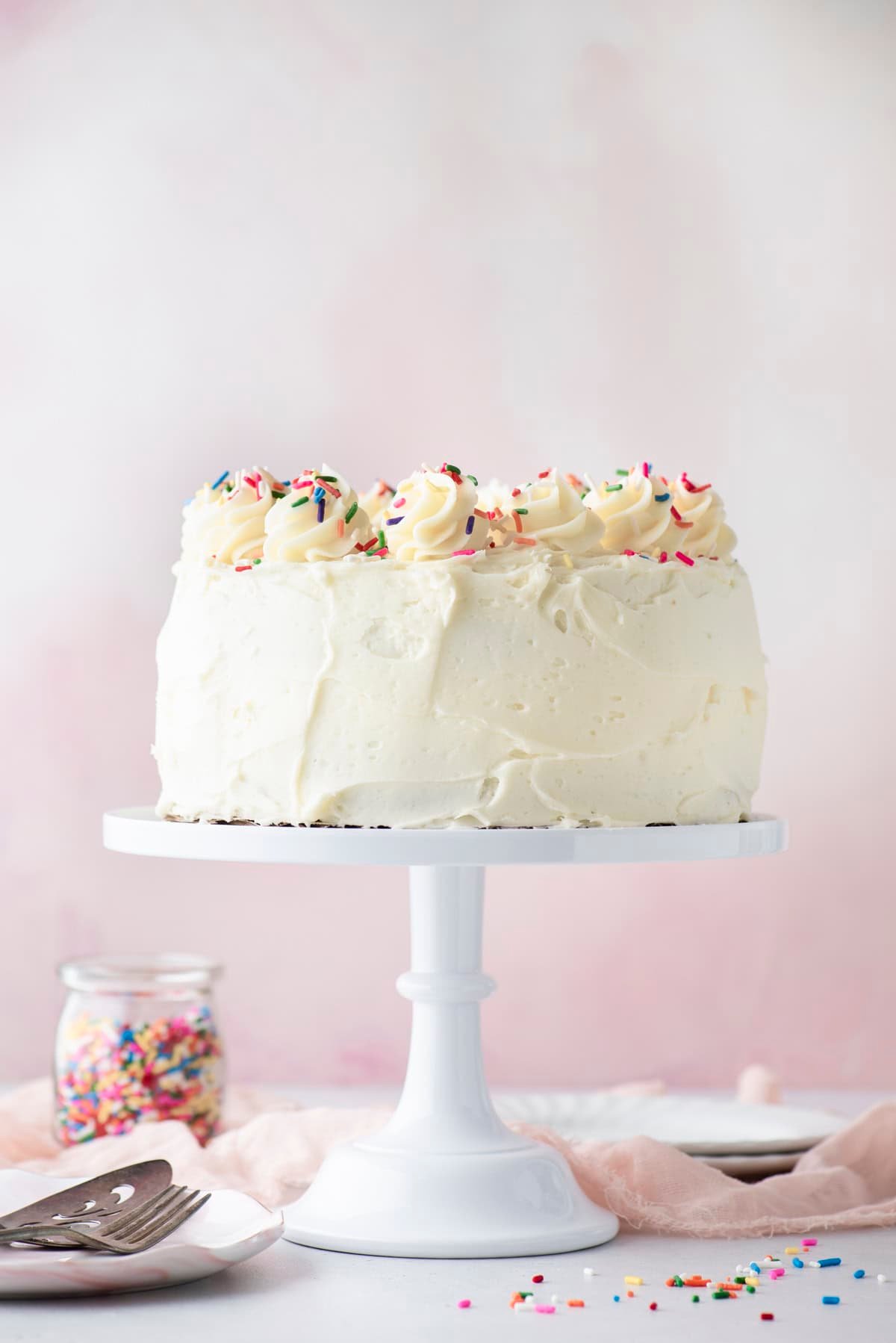
White Wedding Cake
This white cake recipe was born out of curiosity and a reader’s request – a perfect example of how community questions fuel my recipe development! When someone asked if they could turn my classic vanilla cake into a white cake, I didn’t want to just guess.
Instead, I headed straight into the kitchen and started testing. My original vanilla cake uses 4 whole eggs, so to keep the structure and moisture without the yolks, I swapped in 5 egg whites to maintain volume and texture.
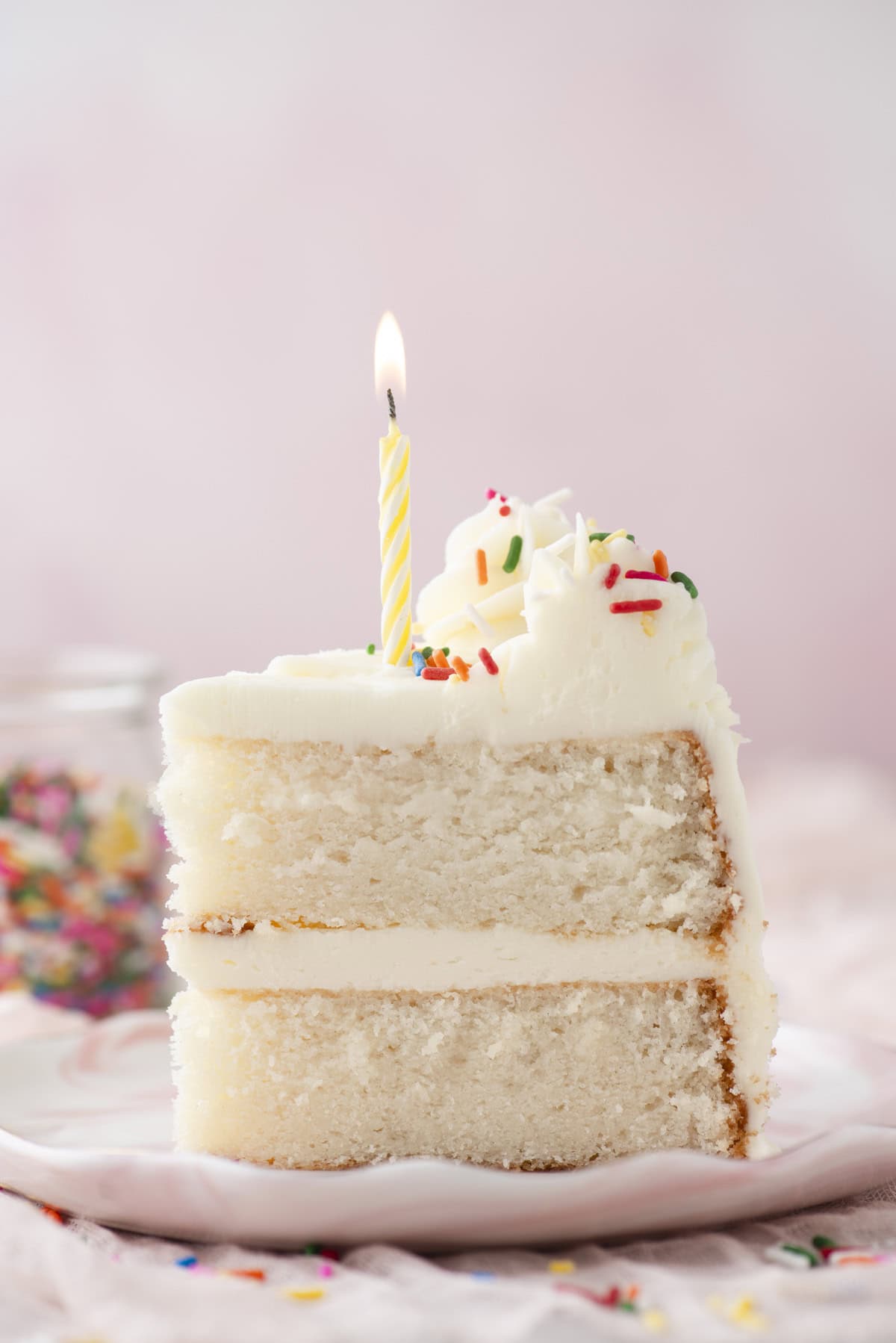
I’ve tested this method side-by-side, comparing it to the full-egg version, and the result is everything you want in a white cake: light, fluffy, and tender with a clean vanilla flavor and a pale crumb that’s perfect for birthdays, weddings, or any celebration.
This isn’t just a theory, it’s a tried, tested, and trusted recipe that works. I’ve baked hundreds of cakes and I know how important it is to have a reliable base recipe, especially for home bakers who want something simple and beautiful without the stress.
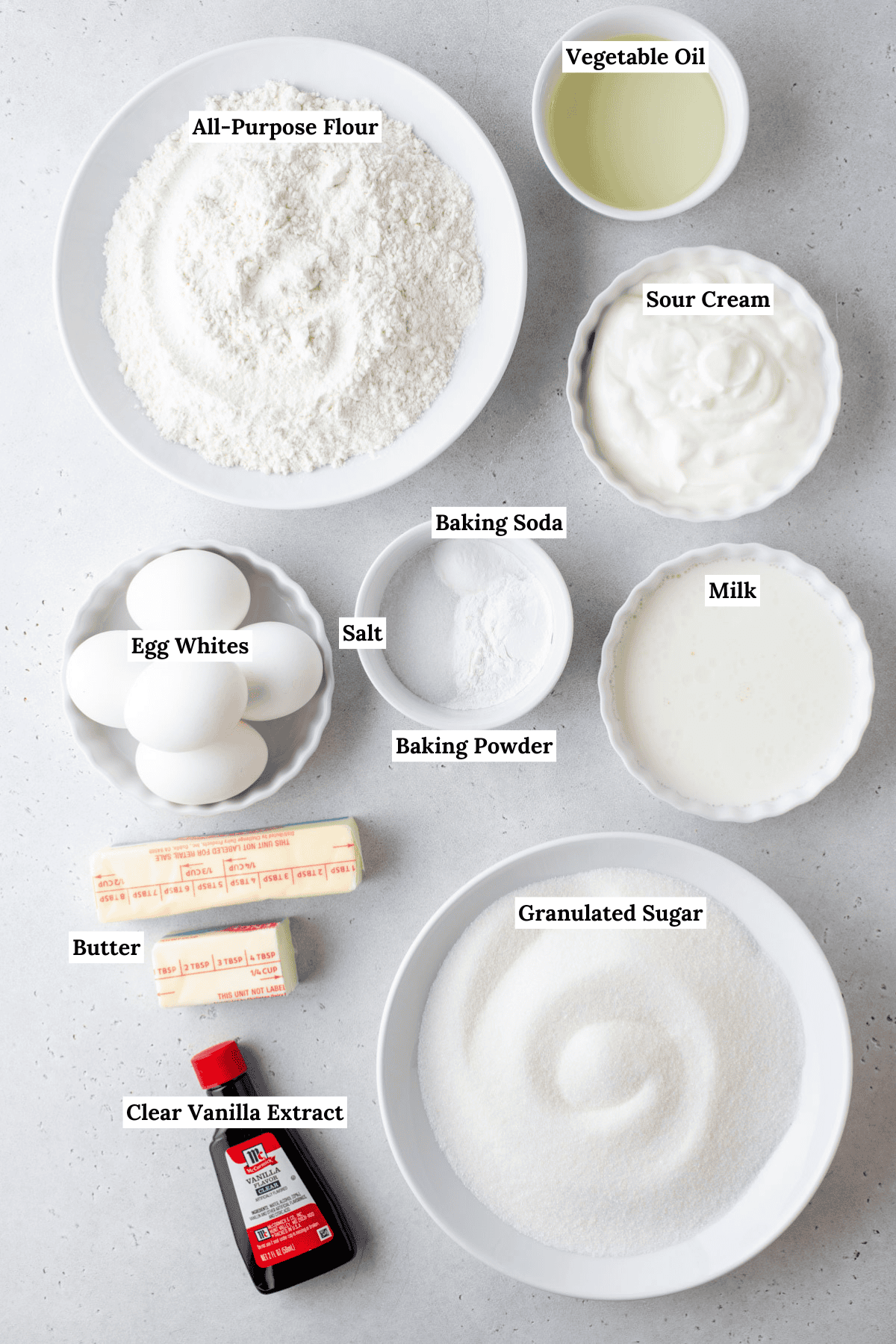
What Makes It a “White Cake”?
White cake is known for its clean, pale crumb and delicate texture – and that signature look comes down to a few key ingredients. The biggest one? No egg yolks. Unlike yellow or vanilla cakes that use whole eggs (which add richness and color), white cake relies solely on egg whites to keep the crumb light in both color and texture. The result is soft, fluffy, and beautifully pale.
Another detail that sets white cake apart is the use of clear vanilla extract. Traditional vanilla extract has a brown tint, which can slightly darken the batter. Clear vanilla keeps the color as light as possible while still delivering that classic vanilla flavor. It’s a small but impactful swap, especially if you’re baking for weddings or special occasions where presentation matters.
White cake is subtly sweet, tender, and makes the perfect base for any frosting or filling—from fresh berries and lemon curd to rich buttercream. If you’re looking for a classic, celebration-worthy cake that’s as versatile as it is beautiful, white cake delivers every time.
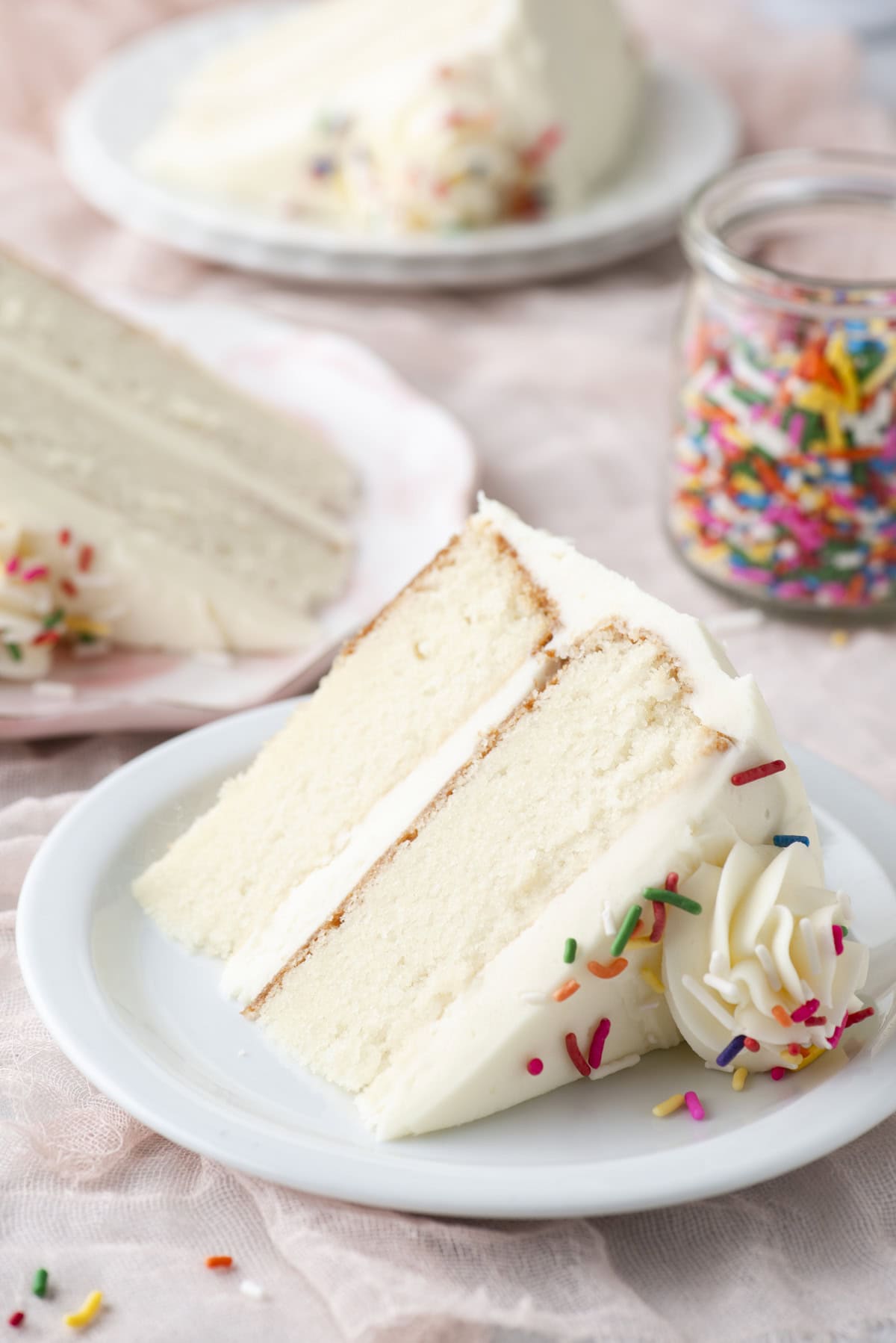
How to Make the Best White Cake Recipe
This is the perfect cake for special occasions, and you can make it like a pro when you follow my easy step-by-step instructions:
For the Cake
- Prep oven and pans. Preheat the oven to 350º F. Grease two or three 8 inch springform pans with butter (butter the sides and bottom) and line each pan with a parchment paper circle for easy cake removal. Set aside.
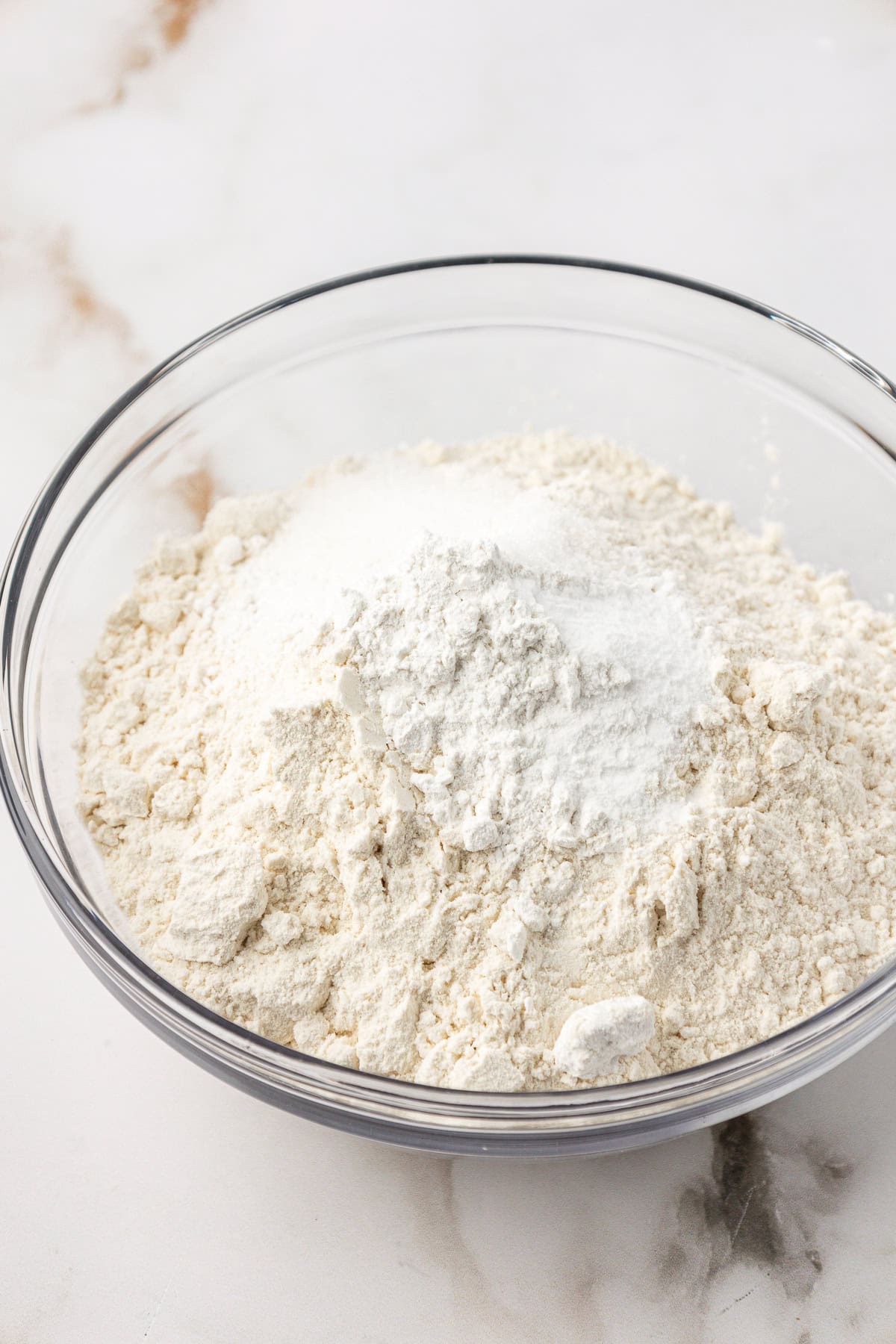
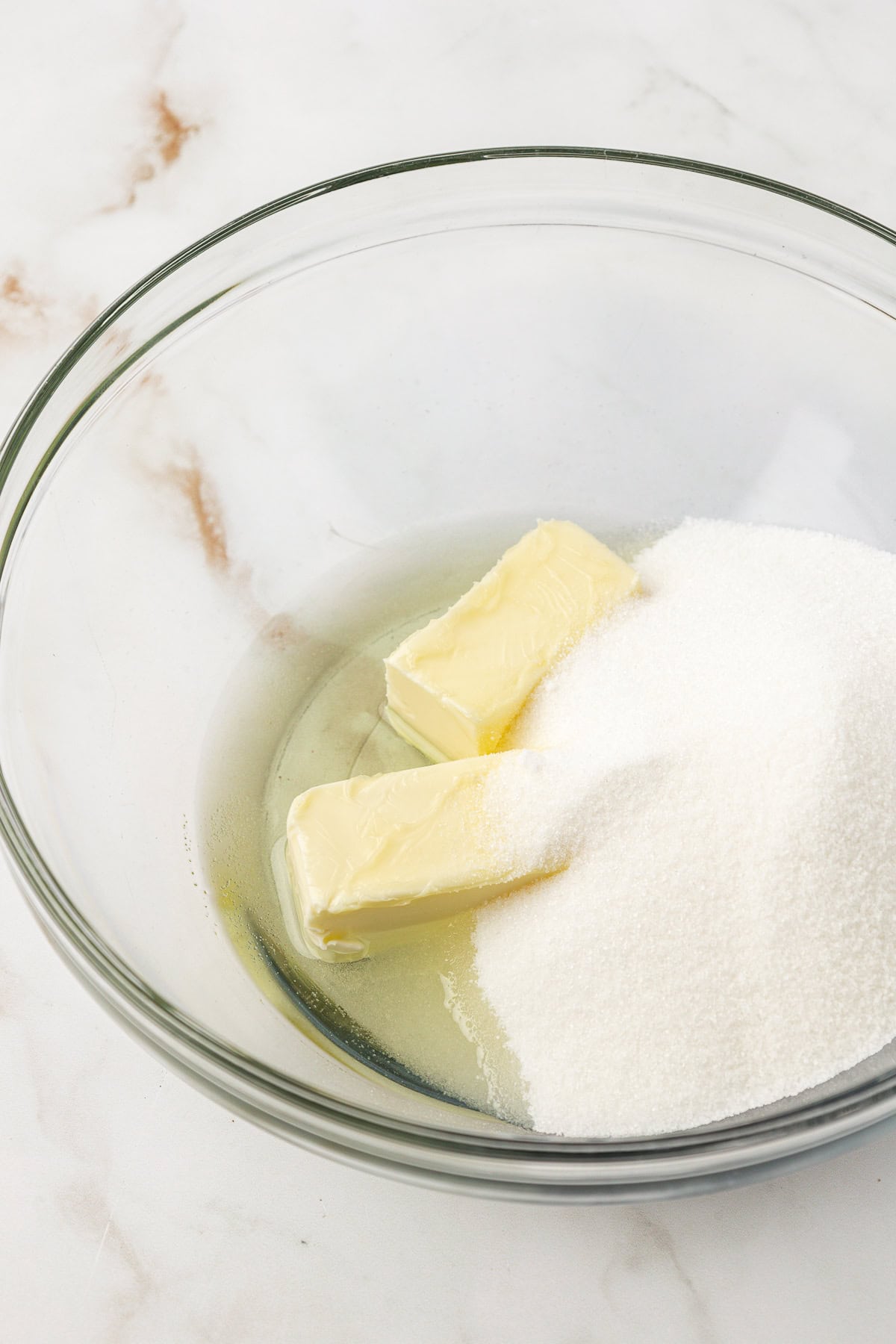
- Combine dry ingredients. In a small mixing bowl combine the flour, baking powder, baking soda, and salt.
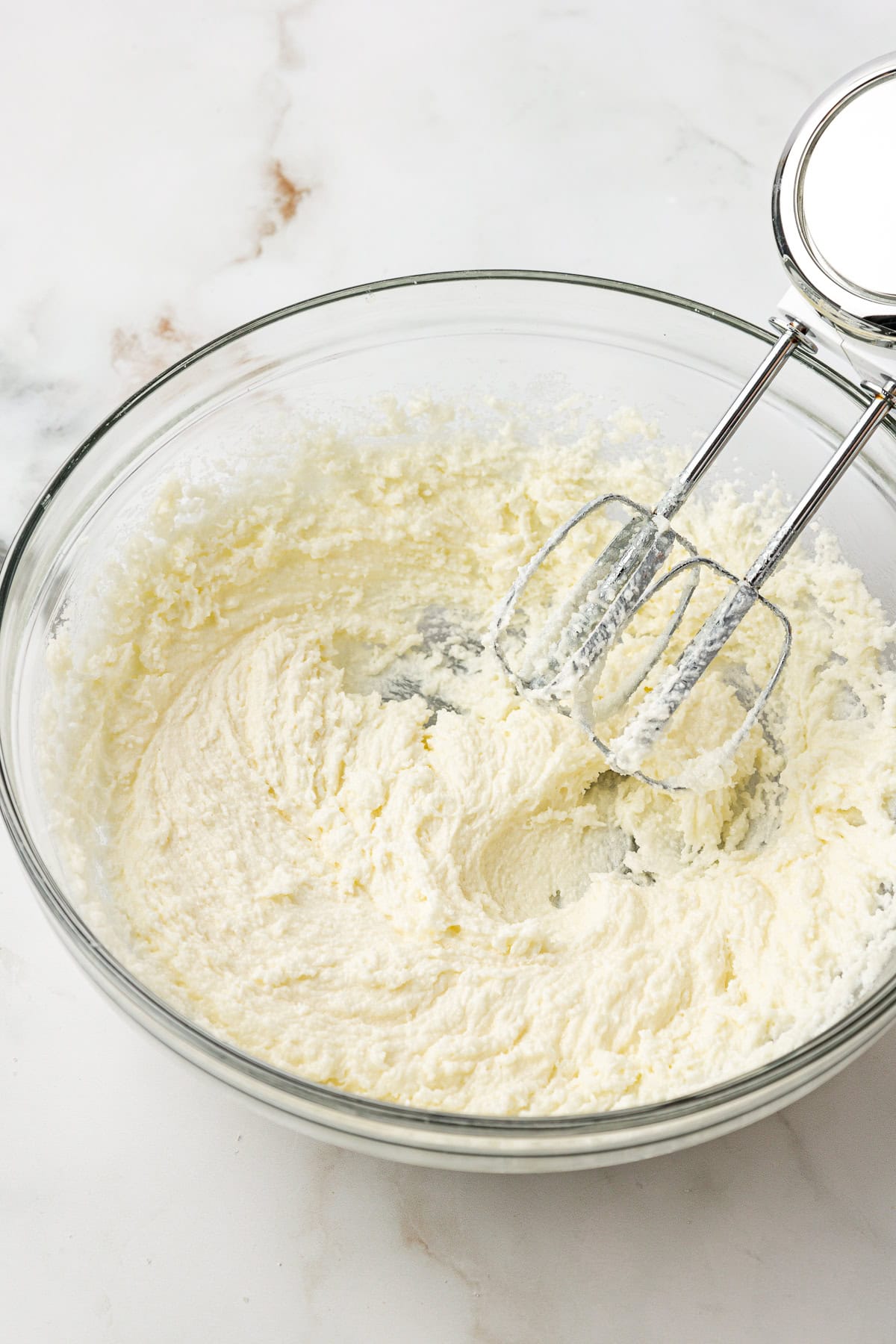
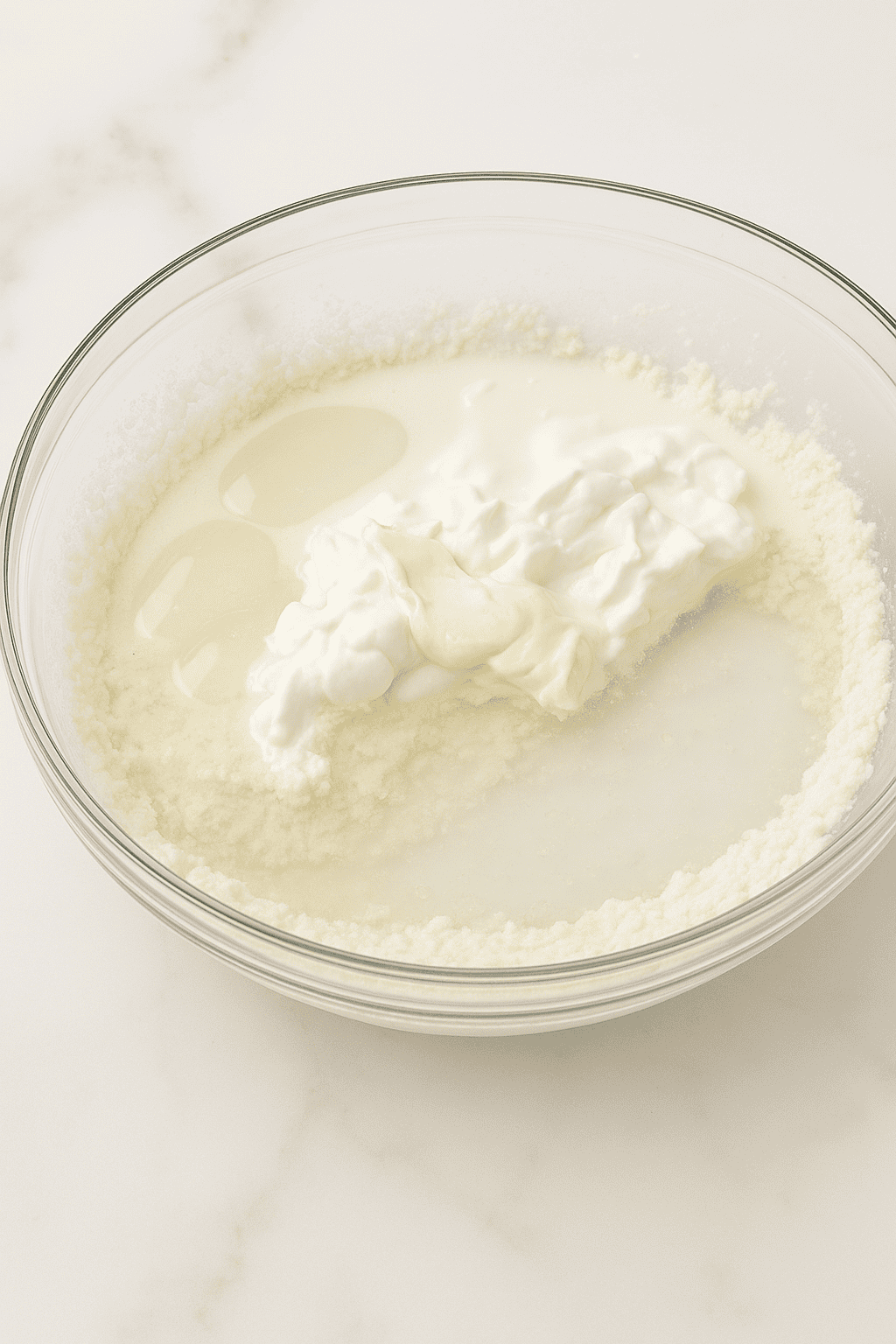
- Beat butter, sugar, and oil. In a large mixing bowl combine the butter, sugar, and vegetable oil, beat using an electric mixer, 1-2 minutes until fluffy.
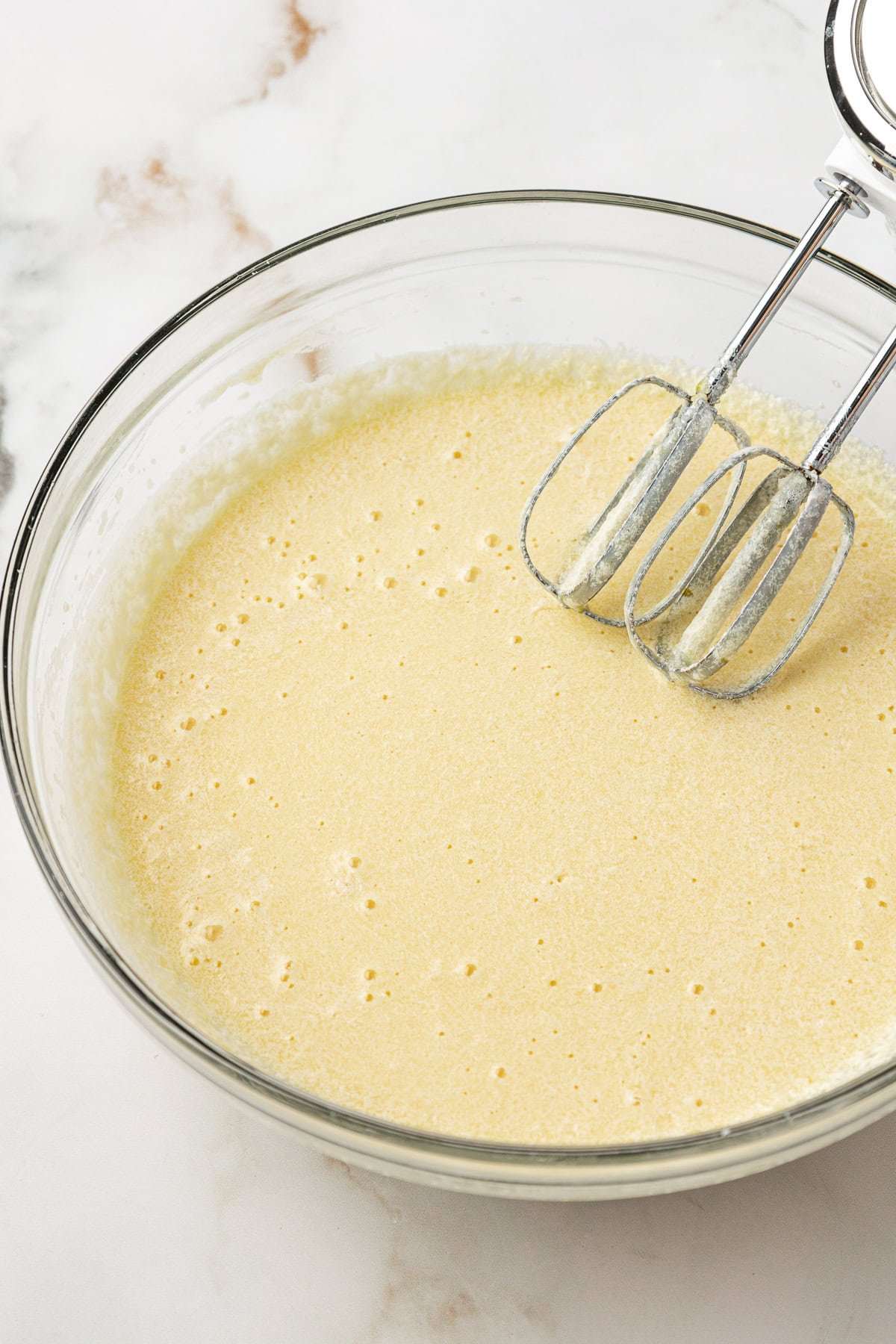
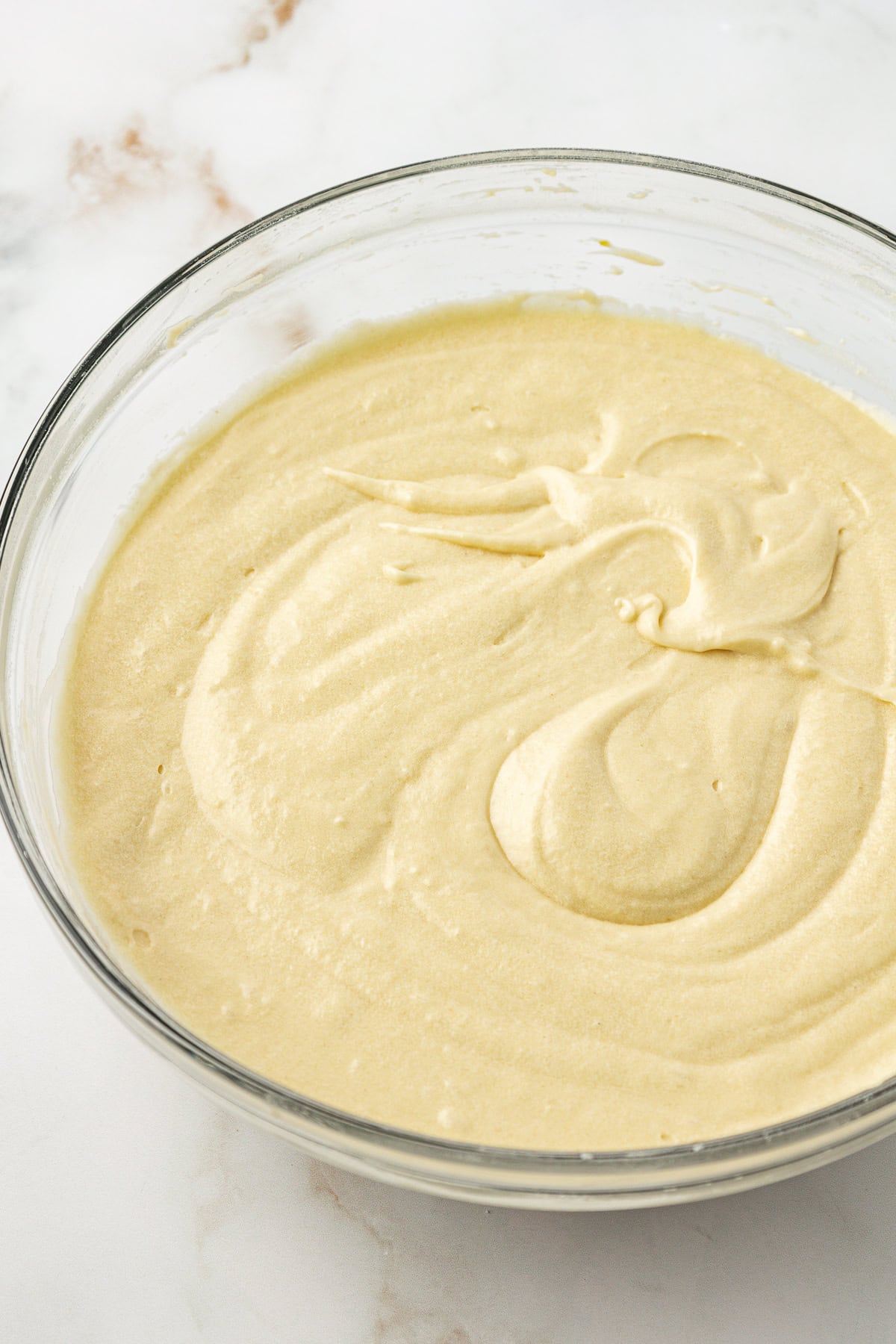
- Combine wet ingredients. Add in the eggs, sour cream, milk, and vanilla extract. Beat with the electric mixer.
- Combine wet and dry ingredients. Gradually add the flour mixture to the wet ingredients, mixing just until the flour is incorporated.
- Evenly divide the batter among the pans. If using 2 pans, that’s 3 cups of batter per pan, if using 3 pans, that’s 2 cups of batter per pan. If you have bake even cake strips, soak them, then secure them around the outside of the pans.
- Bake. Bake 2 pans for 40-50 minutes or 3 pans for 32-37 minutes or until a toothpick inserted in the center comes out clean.
- Cool. Allow the cakes to cool for 20-30 minutes in the pans, then use a small spatula to loosen the cake from the edge of the pan. Remove the cake from the pans and allow them to cool completely on a cooling rack.
For the Frosting
- Combine ingredients. In a large bowl, combine the butter, vanilla extract and salt, beat using an electric mixer until fluffy, 1-2 minutes. Gradually add the powdered sugar and 3 tbsp of heavy cream, mixing on low until combined.
- Adjust as needed. Taste as needed to determine if you want more powdered sugar. If the frosting becomes too thick, add 2-4 tablespoons of milk or heavy cream.
Assemble the Cake
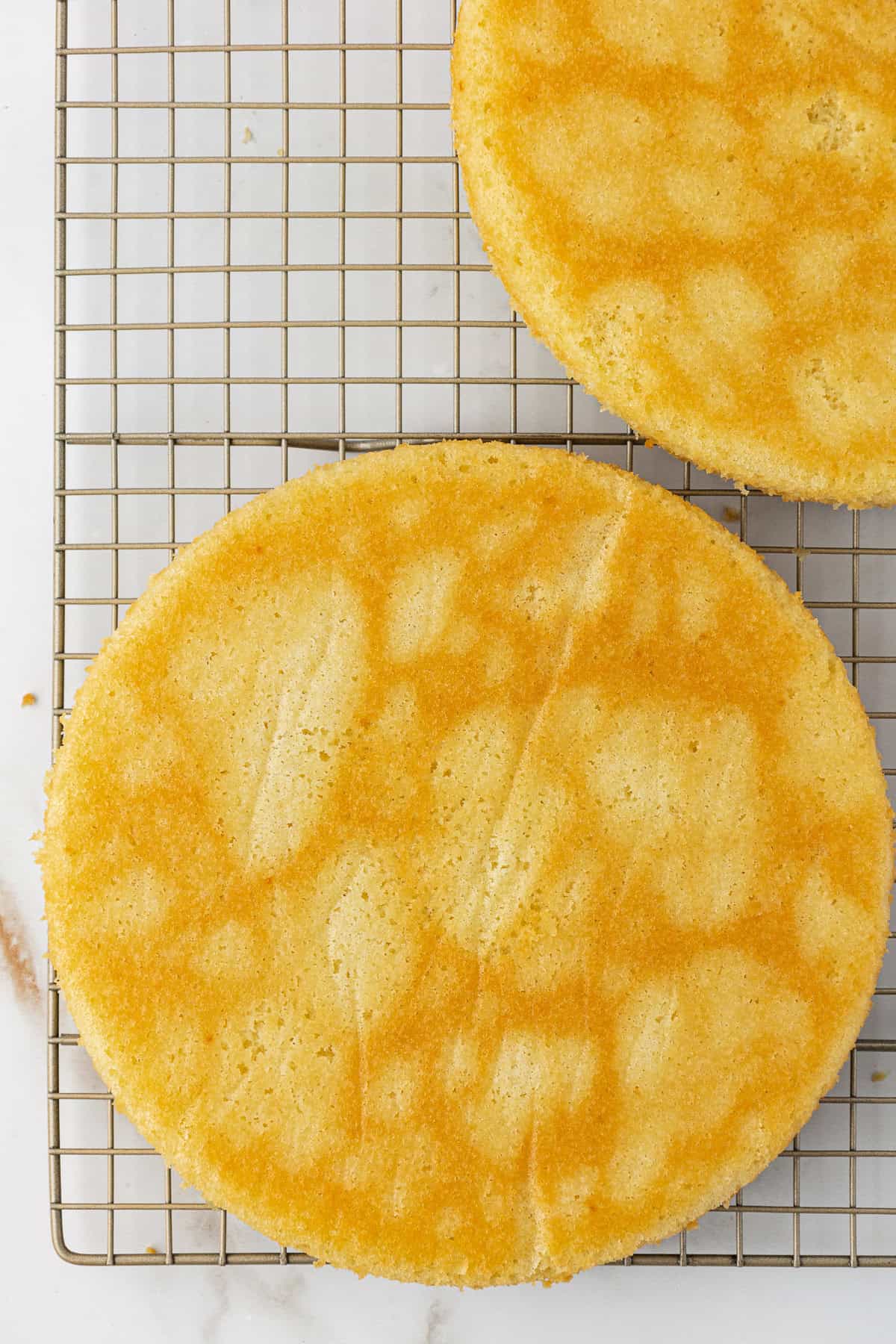
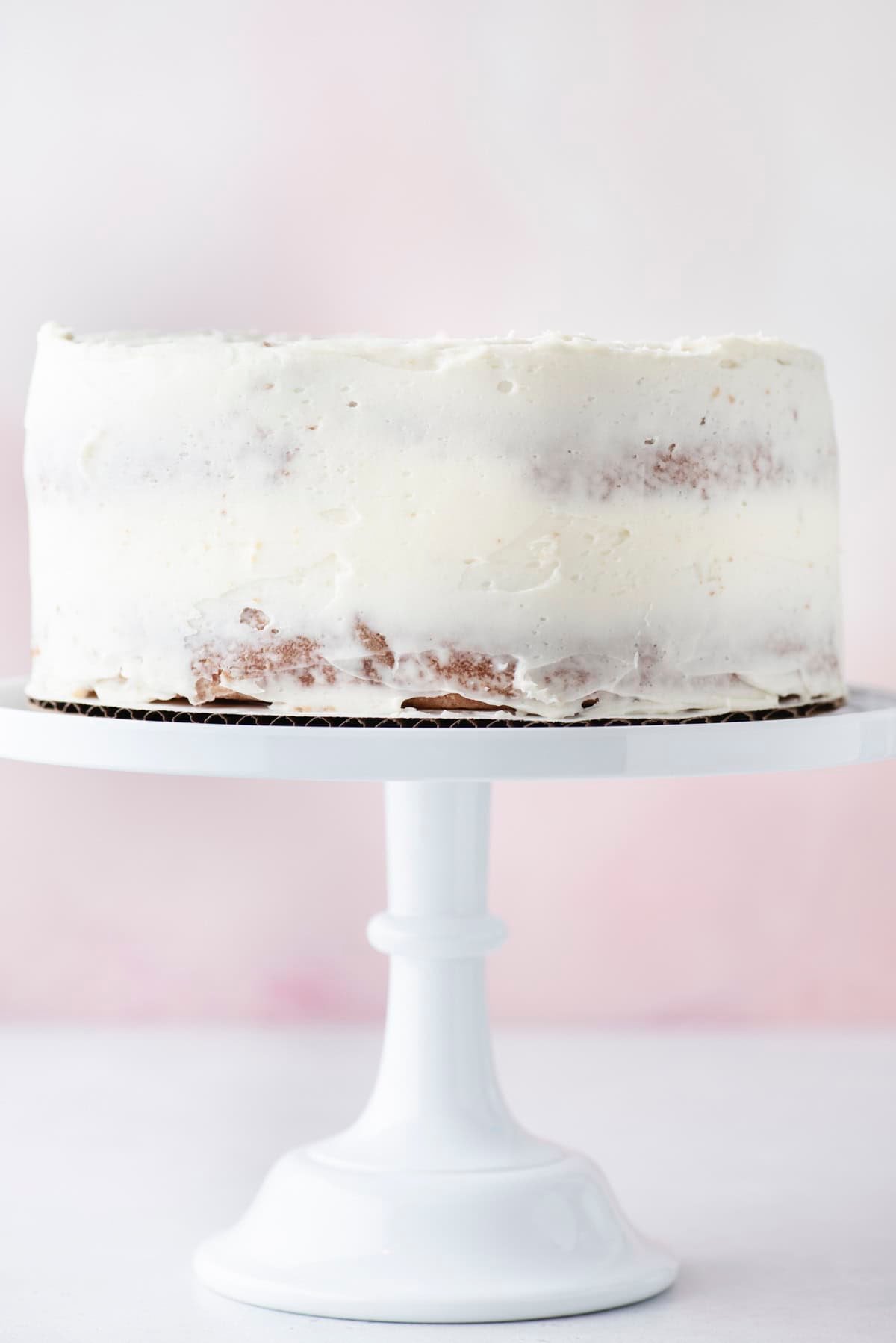
- Level cakes. If needed, level the cooled cakes using a cake levered or serrated knife.
- Frost. Spread a small amount of frosting on the bottom of your cake plate / stand, this acts as “glue” to prevent the cake from moving. Place one cake layer over the frosting. Measure 3/4 to 1 cup of frosting and evenly spread that on top of the first layer. Top with the second cake layer and spread another ¾ to 1 cup of frosting on top of that layer. Use the remaining frosting around the sides and top of the cake.
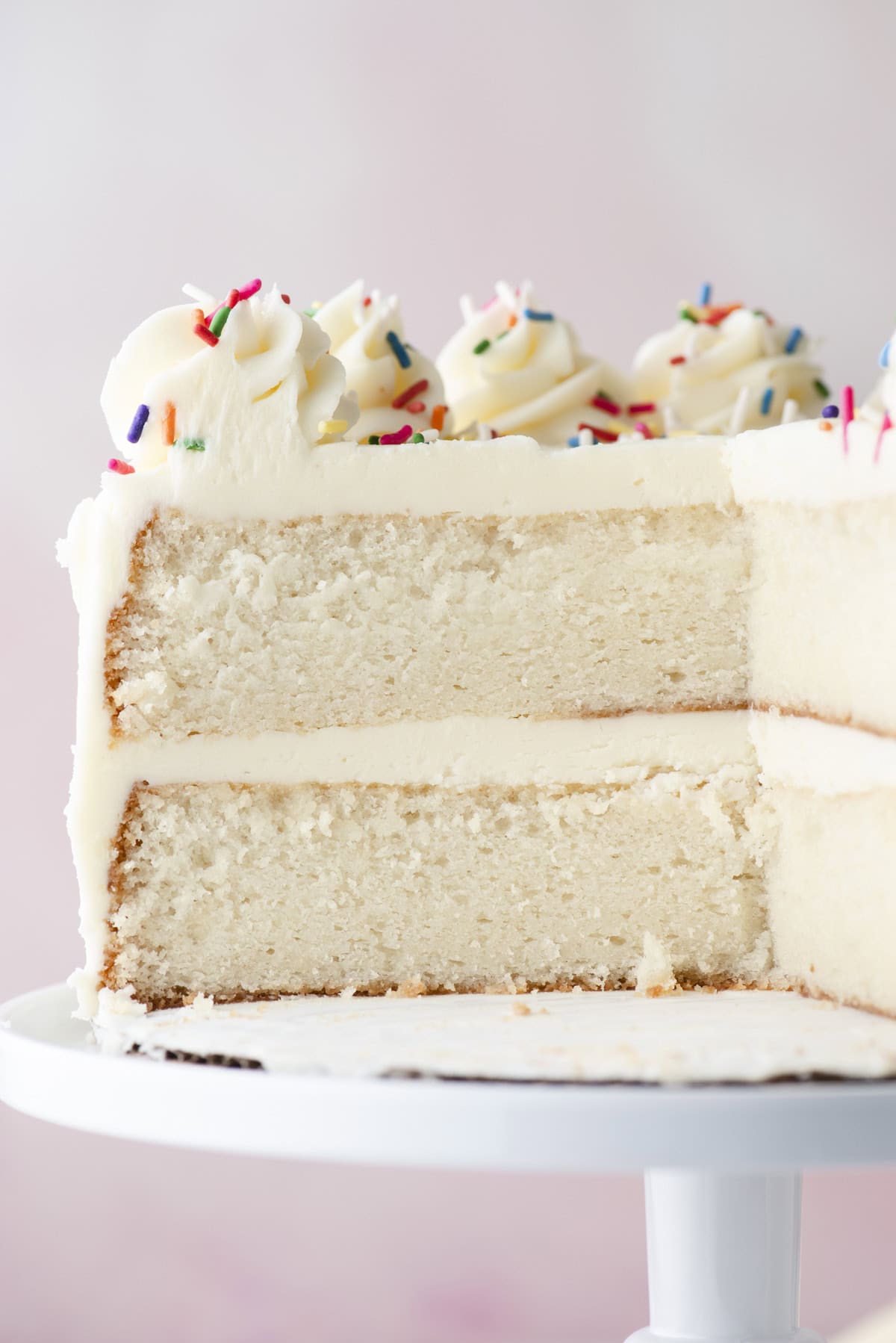
Pro Tips for the Best Homemade White Cake
To make the perfect white cake recipe, follow my pro tips:
- Use Room Temperature Ingredients: Room temperature butter and egg whites blend more easily, helping the batter mix evenly. This results in the best texture and more even bake.
- Don’t Skip the Sour Cream: Sour cream is key to this cake’s moist and tender crumb. Its fat content adds richness while the acidity helps activate the baking soda.
- Be Gentle When Mixing: Over-mixing the batter after adding the flour can lead to a dense cake. Mix just until the flour is incorporated to keep the crumb light and fluffy.
- Measure Flour Accurately: Too much flour can dry out the cake. Spoon the flour into your measuring cup and level it off with a knife, or use a kitchen scale for best accuracy.
- Bake Even Layers: Use bake-even strips or wrap wet strips of cloth around your cake pans to help the layers bake flat and evenly.
- Don’t Overbake: Start checking for doneness at the low end of the time range. The cake is ready when a toothpick comes out clean or with a few moist crumbs.
- Cool Completely Before Frosting: Warm cake layers can melt your frosting. Let the layers cool fully on a wire rack before assembling.
- Customize the Frosting Consistency: Adjust the frosting by adding more powdered sugar for stiffness or more cream for softness. Aim for a smooth, spreadable texture that holds its shape.
- Level Your Layers for a Polished Look: If your cakes bake with slight domes, use a serrated knife or cake leveler to even them out for a stable, stacked cake.
- Chill Before Slicing (Optional): For cleaner slices, chill the assembled cake for 20–30 minutes before serving. This helps the frosting set and keeps layers intact.
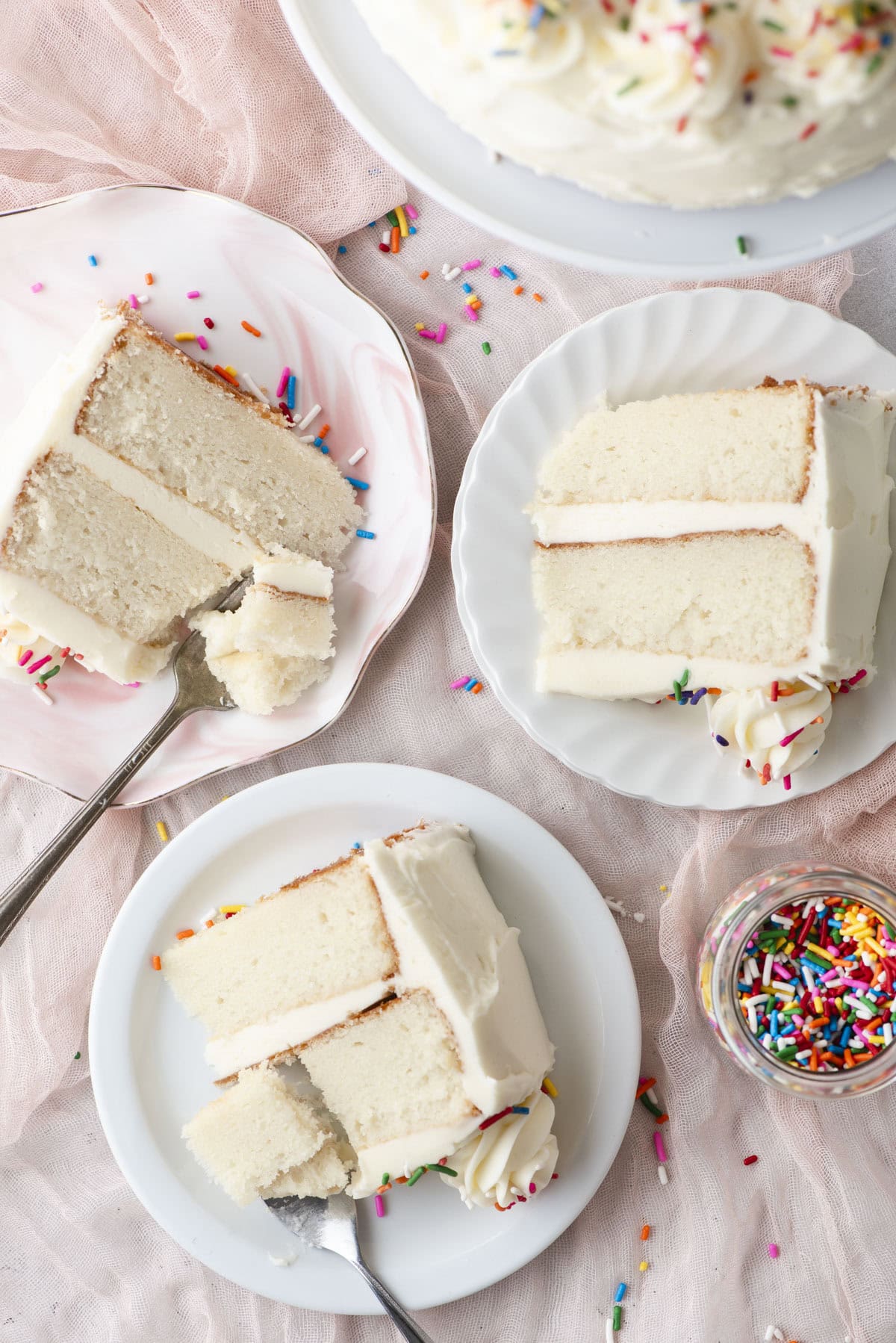
White Cake Variations
Looking for ways to change up your white layer cake? Try these variations:
- Add a flavorful filling: Try using lemon curd, custard, or a berry compote between the cake layers as an alternative to frosting.
- Switch up the frosting: White cake pairs with any frosting flavor. Try oreo frosting, salted caramel frosting, and traditional cream cheese frosting.
- Gluten-Free White Cake: I have had great success making cakes gluten-free by using King Arthur’s Gluten Free Measure for Measure Flour. Simply swap it in as a direct one-to-one substitute for regular flour.
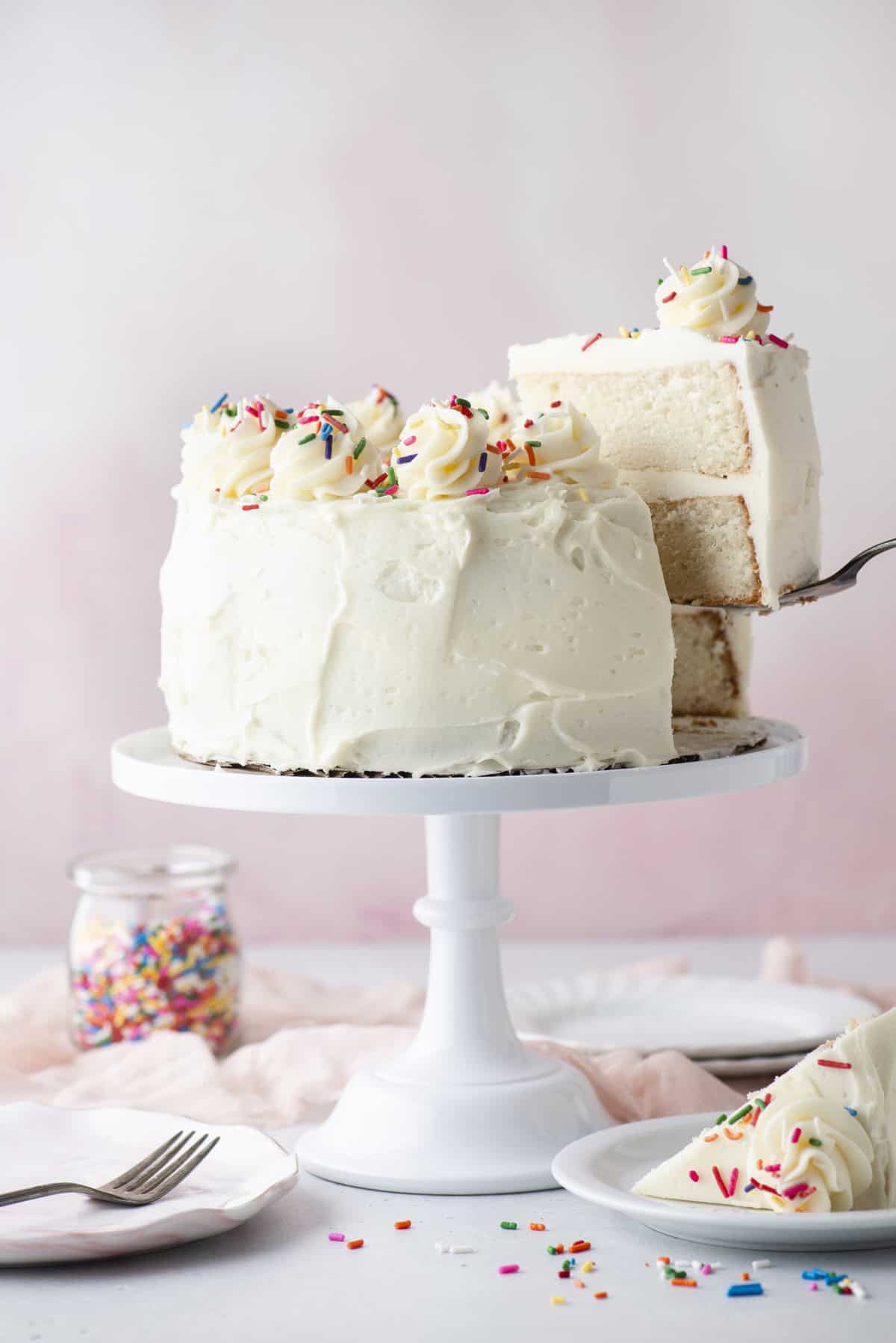
White Cake Storage Suggestions
You can keep this cake at room temperature for up to three days. Cover it loosely with plastic wrap or place any leftovers in an airtight container.
Freezing White Cake
To freeze a whole frosted cake, place it uncovered on a baking sheet in the freezer until the frosting is firm. Then, wrap the entire cake tightly in several layers of plastic wrap and return it to the freezer.
For leftover slices, store them in an airtight container or freezer bag. If stacking slices, place a piece of parchment paper between each to prevent sticking.
When you’re ready to serve, thaw the cake in the refrigerator. If thawing a whole frosted cake, slightly loosen the plastic wrap to prevent it from sticking to the frosting as it softens.
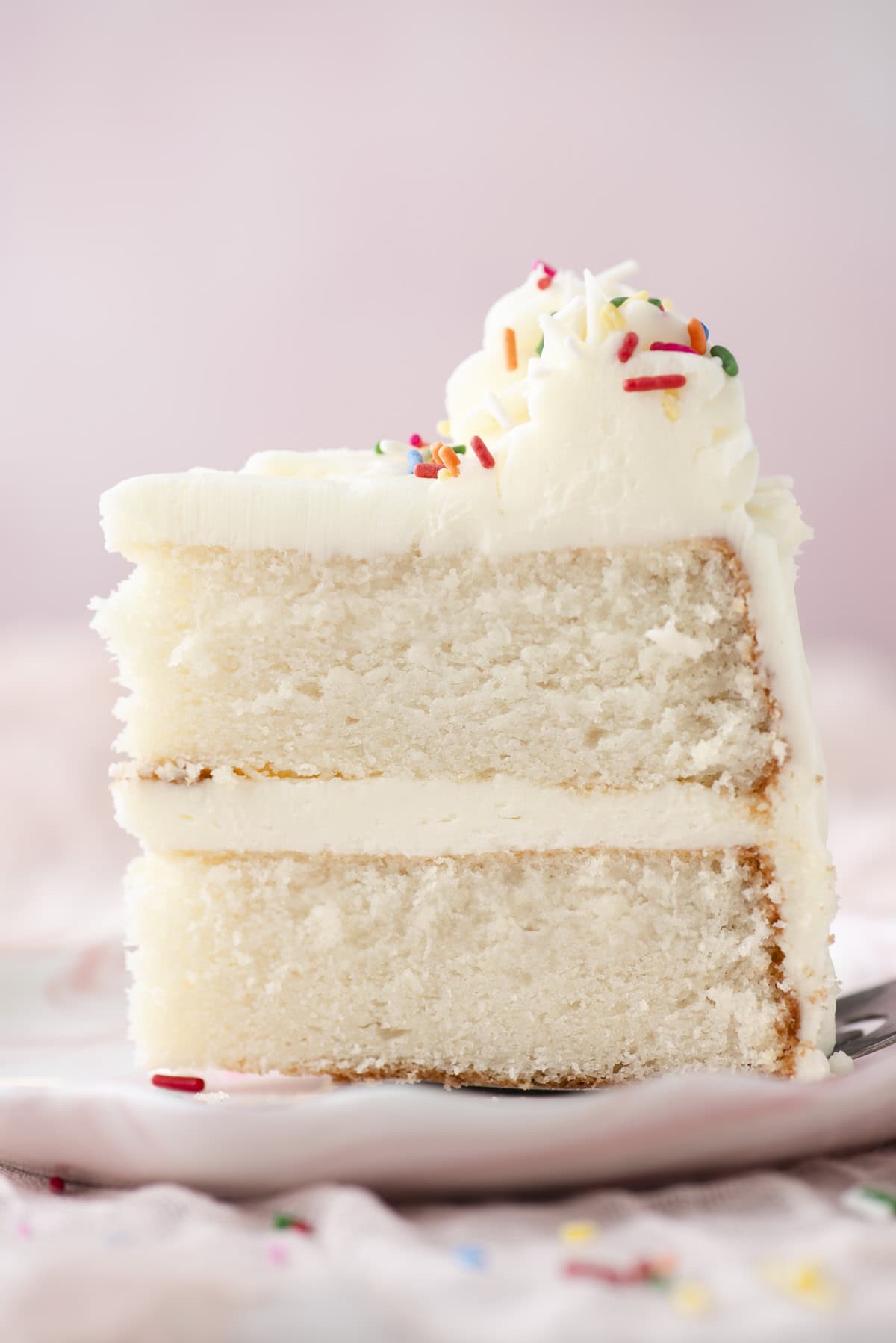
More Cake Recipes

Tap stars to rate!
White Cake Recipe
Ingredients
Cake
- 2 ½ cups (300g) all-purpose flour
- 2 tsp baking powder
- ½ tsp baking soda
- 1 tsp salt
- ¾ cup (170g) unsalted butter, room temperature
- 1 ¾ cups (346g) granulated sugar
- ¼ cup (59ml) vegetable oil
- 5 large egg whites, room temperature
- 1 cup (227g) sour cream
- ½ cup (118ml) milk, I used whole milk
- 1 Tbsp vanilla extract
Vanilla Frosting
- 2 ½ cups (565g) unsalted butter, room temperature
- 2 Tbsp vanilla extract
- ⅛ tsp salt
- 6-10 cups (681-1135g) powdered sugar
- 3-6 Tbsp milk or heavy cream if frosting becomes too thick

Instructions
Cake
- Preheat the oven to 350º F. Grease two or three 8 inch springform pans with butter (butter the sides and bottom) and line each pan with a parchment paper circle for easy cake removal. Set aside.
- In a small mixing bowl combine the flour, baking powder, baking soda, and salt.2 ½ cups (300g) all-purpose flour, 2 tsp baking powder, ½ tsp baking soda, 1 tsp salt
- In a large mixing bowl combine the butter, sugar, and vegetable oil, beat using an electric mixer, 1-2 minutes until fluffy.¾ cup (170g) unsalted butter, 1 ¾ cups (346g) granulated sugar, ¼ cup (59ml) vegetable oil
- Add in the eggs, sour cream, milk, and vanilla extract. Beat with the electric mixer.5 large egg whites, 1 cup (227g) sour cream, ½ cup (118ml) milk, 1 Tbsp vanilla extract
- Gradually add the flour mixture to the wet ingredients, mixing just until the flour is incorporated.
- Evenly divide the batter among the pans. If using 2 pans, that’s 3 cups of batter per pan, if using 3 pans, that’s 2 cups of batter per pan. If you have bake even cake strips, soak them, then secure them around the outside of the pans.
- Bake 2 pans for 40-50 minutes or 3 pans for 32-37 minutes or until a toothpick inserted in the center comes out clean.
- Allow the cakes to cool for 20-30 minutes in the pans, then use a small spatula to loosen the cake from the edge of the pan. Remove the cake from the pans and allow them to cool completely on a cooling rack.
Frosting
- In a mixing bowl, combine the butter, vanilla extract and salt, beat using an electric mixer until fluffy, 1-2 minutes.2 ½ cups (565g) unsalted butter, 2 Tbsp vanilla extract, ⅛ tsp salt
- Gradually add the powdered sugar and 3 tbsp of heavy cream, mixing on low until combined.6-10 cups (681-1135g) powdered sugar, 3-6 Tbsp milk or heavy cream if frosting becomes too thick
- Taste as needed to determine if you want more powdered sugar. If the frosting becomes too thick, add 2-4 tablespoons of milk or heavy cream.
Assemble the Cake
- If needed, level the cooled cakes using a cake levered or serrated knife.
- Spread a small amount of frosting on the bottom of your cake plate / stand, this acts as “glue” to prevent the cake from moving. Place one cake layer over the frosting. Measure 3/4 to 1 cup of frosting and evenly spread that on top of the first layer. Top with the second cake layer and spread another ¾ to 1 cup of frosting on top of that layer. Use the remaining frosting around the sides and top of the cake.
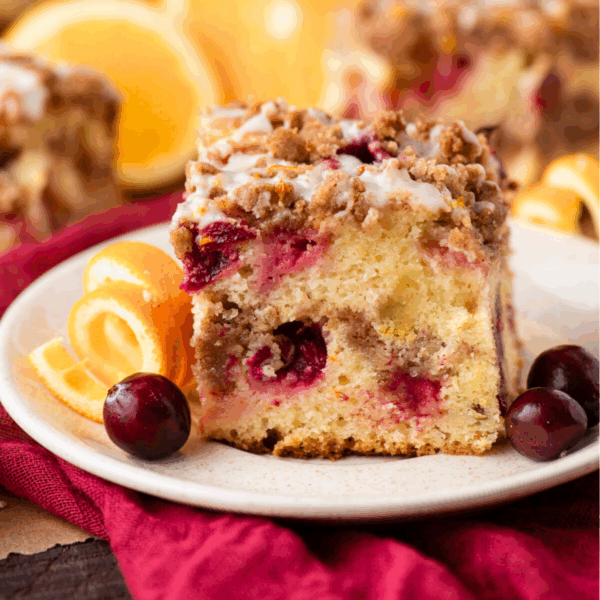
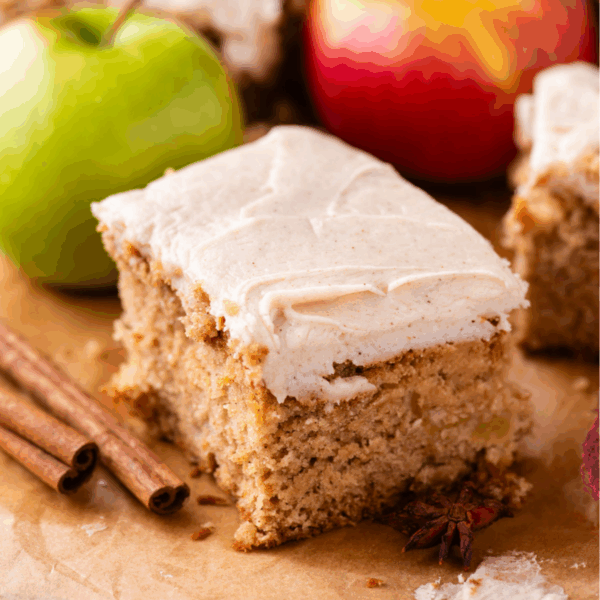
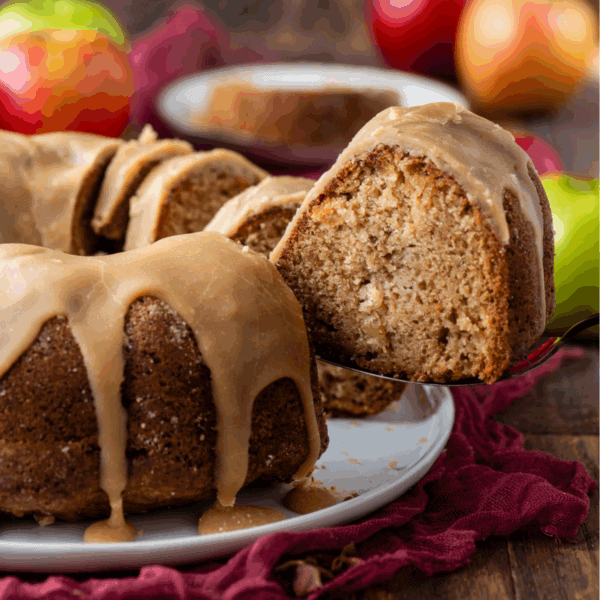
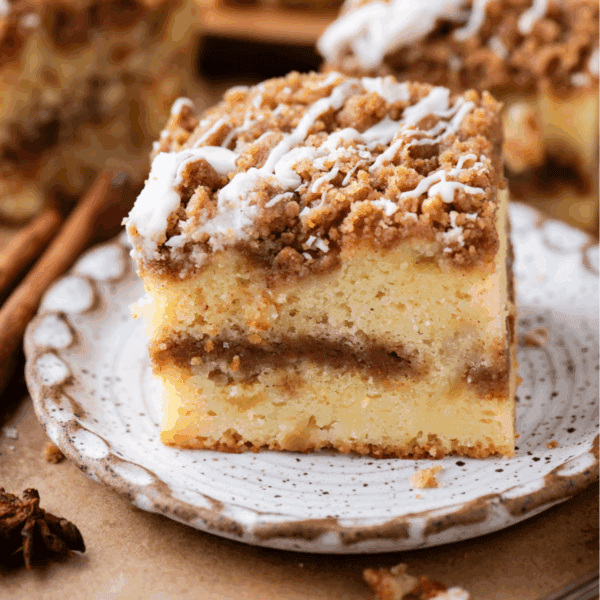






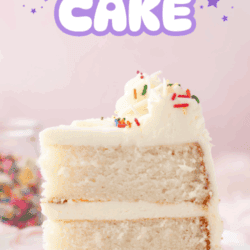
Made this cake on a full sheet cake pan and cut it into numbers. It was a big hit the cake was delicious